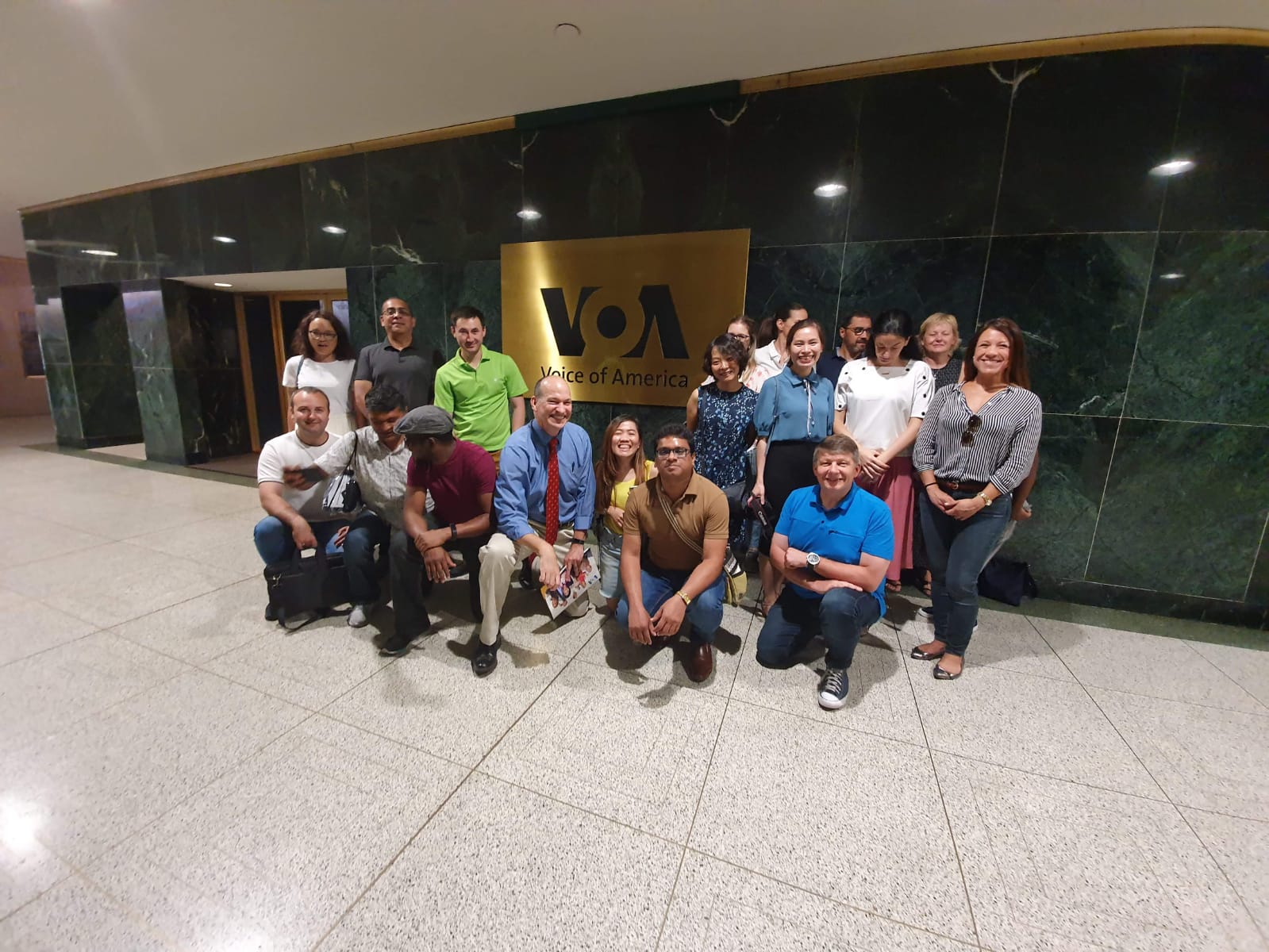We are packing up our six-week program with these final days in Washington DC, our last days in the US as well. And today, we are packing up our journalism journey with Voice of America and the Newseum.
VOA is proud of being the largest US international broadcaster now, from its modest beginning in 1942 as a response to the needs of people in closed and war-torn societies. Now they have 21 radio broadcast studios including two designed for radio on TV, three for Facebook Live and one for live musical events, plus 30 professional audio mixing and dubbing stations, seven broadcast TV studios and three TV production studios…
With 46 languages in Africa, East Asia, Eurasia, Latin America, South & Central Asia, VOA English and VOA Persian, they have a global network of correspondents to provide comprehensive news and analysis on key issues, US government policies and cultural developments.
Every year, VOA is funded two to three hundred million dollars by the government. However, they stated that being unbiased and reliable is their motto, as in William Harlan Hale’s saying: “The news may be good. The news may be bad. We shall tell you the truth.”
Confronted with the challenge of the digital age, from its starting point as a radio channel, now VOA has become one of the largest multimedia news organizations in the world. A network of transmitting stations operated by the International Broadcasting Bureau, along with some leased stations, sends VOA’s programs instantaneously around the world. The website VOANews.com provides a wide range of English-language news reports and serves as a portal to the homepage of all 46 languages broadcast.
Walking from VOA to the Newseum, most of the group enjoyed the educational and interactive journalism museum. Two hours may not be enough time for us to fully discover the dynamic and engaging exhibitions there.

You may be moved to tears when seeing your country’s images in the war, or in some historical events of the world in the Pulitzer photography room. With me, the photos taken during the Vietnam War, which have been popular in my home country, now take on another color when they appeared at a gallery in the US.

In the interactive room, visitors could take a survey with questions on journalism ethics. “Would you help the child or take the picture of the vulture as Kevin Carter?” Or “Would you break the law to discover mischecking of security checkers at the airport?” You might be surprised by the answers of journalists and the experts, through which journalism ethics become a personal perspective, or point of view.
